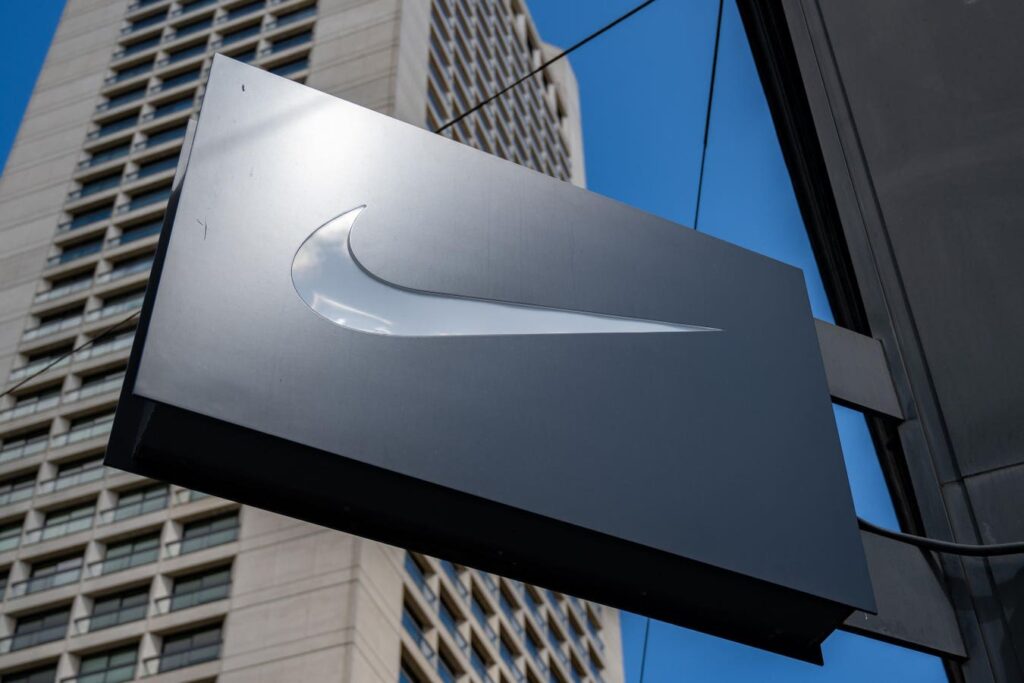Note: Nike’s FY’24 concluded on May 31, 2024.
This month marks a second significant billion-dollar transaction—following Skechers’ $9.4 billion sale—Dick’s Sporting Goods (NYSE : DKS) has declared a $2.4 billion purchase of Foot Locker (NYSE: FL). The agreement highlights the ongoing strength and strategic relevance of the sports retail industry, even in the face of persisting tariff pressures and varying consumer demand. Subject to shareholder and regulatory clearances, the acquisition is anticipated to finalize in the second half of 2025. This action reflects a wider phenomenon among retail firms to future-proof their operations by achieving scale, diversifying, and enhancing leverage with leading brands like Nike (NYSE: NKE), Adidas, and Under Armour (NYSE: UA). For Nike, the ramifications are particularly notable as it navigates a shifting retail environment characterized by changes in consumer behavior, digital acceleration, and uncertainties in global trade, including tariff fluctuations. Additionally, if you seek growth with a steadier approach than an individual stock, contemplate the High Quality portfolio, which has surpassed the S&P, and achieved >91% returns since inception.
Tariff Alleviation Through Scale
In spite of a temporary relaxation of U.S.-China trade strains, with tariffs on Chinese imports cut to 30% from 145% and China reducing U.S. tariffs to 10% from 125%, Nike remains exposed. Approximately 24% of Nike’s suppliers and 15% of its revenue are linked to China, and close to 50% of its footwear and 30% of its apparel are sourced from Vietnam. These dependencies render Nike vulnerable to future trade disruptions.
A larger, more integrated retail partner such as the merged Dick’s-Foot Locker entity could assist in mitigating some of these cost pressures, allowing Nike to optimize logistics, secure better terms, and maintain its pricing power without sacrificing margins.
Effect on Nike’s Strategy
Nike had previously transitioned toward a Direct-to-Consumer (DTC) approach, disconnecting from certain wholesale partners, including temporarily trimming its association with Foot Locker. Nevertheless, under CEO Elliott Hill, Nike seems to be readjusting, acknowledging the significance of strong wholesale distribution—especially as consumer preferences change and macroeconomic headwinds continue. The merger brings together Nike’s two largest wholesale partners, providing potential advantages such as:
Broader omnichannel access: Dick’s contributes solid digital infrastructure and suburban reach, while Foot Locker adds mall-based and urban retail penetration.
Enhanced brand presentation: A concentrated retail presence enables Nike to bargain for premium in-store placement, effective product storytelling, and a consistent brand experience that aligns with its Consumer Direct Acceleration initiative.
Strategic safeguard: A robust wholesale partner provides Nike with added flexibility during periods of DTC underperformance or inventory adaptations.
Risks and Considerations
Foot Locker is Nike’s largest retail partner and has faced challenges with falling sales, down 6% year-over-year in the latest quarter, amid soft demand for Nike footwear. The company is poised to shut down 110 stores (4% of its footprint) in 2025. While Dick’s could speed up Foot Locker’s reformation, the risk of execution remains high. For Nike, achieving success depends on close collaboration with the newly merged entity to ensure fitting brand alignment and engagement with customers, especially with younger demographics that are increasingly hard to reach through traditional retail.
NKE Valuation and Market Outlook
Nike currently trades around $63 per share, or approximately 21x anticipated 2025 earnings, lower than its three-year average multiple of 30x. While analysts predict a 16% upside to a $73 target price, the short-term prospects seem challenging. In the third quarter of fiscal year 2025, which concluded on February 28, the company exhibited poor performance and has forecasted a revenue decline in the low-to-mid-teens for the fourth quarter. Furthermore, gross margin is anticipated to decrease by 4 to 5 percentage points due to aggressive inventory clearance strategies. For fiscal year 2025, revenue is projected to decline by 11%, while a slight 1% decrease is expected for fiscal year 2026, indicating a slow and gradual recovery.
The Dick’s-Foot Locker agreement represents a defining moment for Nike’s wholesale channel. If executed effectively, the merger could offer Nike a more robust, digitally driven retail partner that could deliver scale, efficiency, and brand enhancement. However, short-term obstacles—ranging from tariff risks to DTC weakness and evolving consumer trends—demand a flexible strategy and strong execution.
While it doesn’t seem like there is significant near-term upside to NKE, investing in a single stock can carry risks. You may consider the Trefis Reinforced Value (RV) Portfolio, which has surpassed its all-cap stocks benchmark (combination of the S&P 500, S&P mid-cap, and Russell 2000 benchmark indices) to deliver robust returns for investors. What’s the reason behind that? The quarterly rebalanced mix of large-, mid- and small-cap RV Portfolio stocks offered a responsive way to capitalize on favorable market conditions while minimizing losses when markets decline, as explained in RV Portfolio performance metrics.
It should also be emphasized that stocks can decline dramatically – 20%, 30%, even 50% –as witnessed during past market shocks. No stock is Preserve & Grow Wealth With Risk-Focused Quality Portfolios
Read the full article here
















